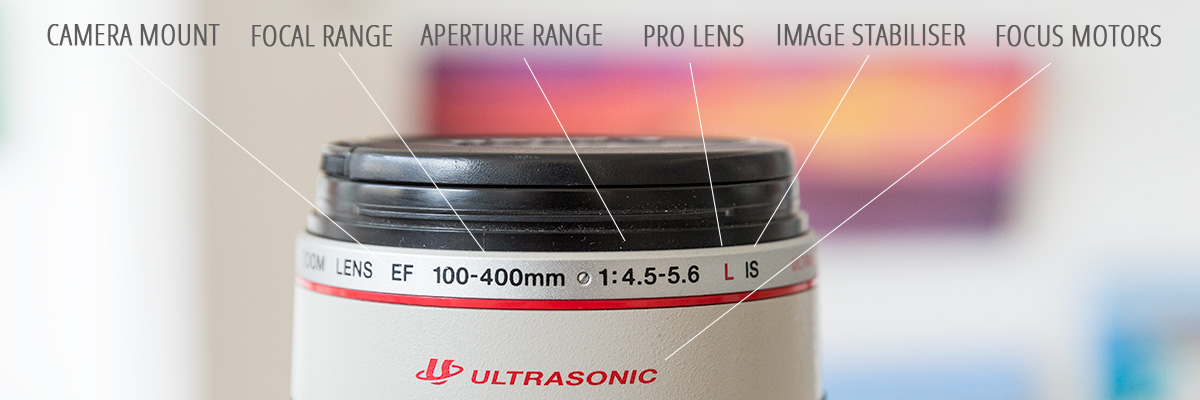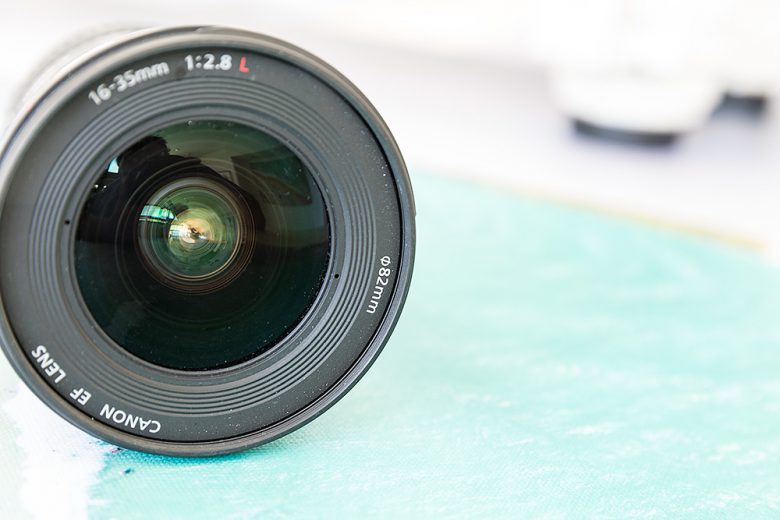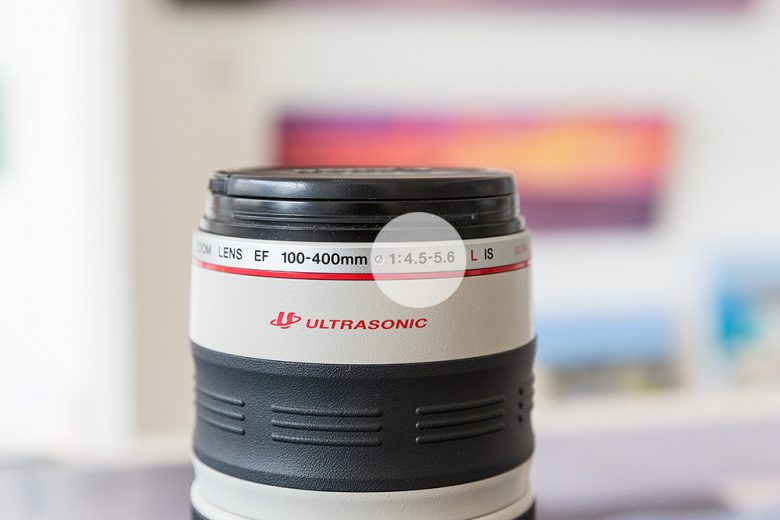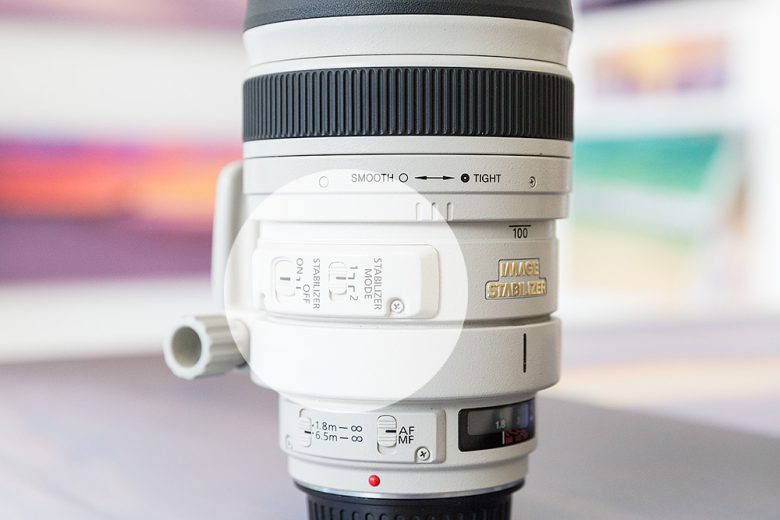
To the trained eye, one glance at a camera lens can tell you if they dropped $200 on a lens or $2500. The numbers, marks and letters on your lens tell you everything you need to know, it’s strengths and weaknesses, what accessories you need to buy, everything. To the untrained eye, it can be like looking at a foreign language and you have no idea. At the end of this article, you will be able look at your lens in a whole new light.

Lens Diameter
This marking is letting you know the diameter of your lens so when you want to buy a filter like a polariser, a UV filter, lens cap, an adaptor ring for your filter holder this is the size you will need and it will screw into the internal thread of the lens.
I shoot with a range of Canon Professional Lenses the image here is of my Canon 16-35mm f/2.8L Mk ll lens. As you can see the lens diameter is 82mm. So with my Lee Filters Foundation Kit
I would buy the Lee Filter 82 Adapter Ring
. This ring will work on all my 82mm lenses.

Focal Length
Again on my Canon 16-35mm f/2.8L Mk ll lens. The 24mm means you will get more in your shot and 70mm means you will be able to zoom in and shoot an object at a further distance. So this lens is a zoom lens. If the lens just displayed the focal length of just 24mm then this is known as a prime lens.This lens has quite a wide focal range and would be popular for people travelling who didn’t want to take two lenses with them.
Lenses like the Canon 18-200mm f/3.5-5.6 or the Nikon 18-300mm f/3.5-6.3 Zoom Lens
have a wide focal length range and is a popular choice for people travelling who can shoot wide angle at 18mm when needed and then snapping something a distance away without changing lenses at the 200 or 300mm.

Aperture Maximum
Above we talked about Focal Length, well these markings are indicating the maximum aperture you can achieve at the focal length extremes of your lens. On my 24-70mm lens all it says is f2.8 this means at all focal lengths between 24mm and 70mm the aperture will always remain f2.8.
On the Canon 18-200mm lens, the markings say f3.5-5.6. This means that at 18mm the widest aperture you can shoot at is f3.5 but as you change focal length from 18 to 200mm the Aperture will change in 1.3rd stop increments until you get to 200mm and the max Aperture will be f5.6.
When you start paying more money for your lenses you will start to lose these kind of Aperture changes (restrictions.) A lens like the Canon 24-105mm f/4 L lens is a great compromise in money and getting a fixed Aperture through the focal length range. With this lens the maximum Aperture is F4. The L indicates the lens is a professional series lens for Canon.

Image Stabiliser
This means your lens has Image Stabiliser. There will be an additional switch or even two on your lens that will activate the Image Stabiliser (IS) feature. The IS when on sensors the movement in you camera from you hand holding it and it compensates it so the camera remains as still as possible. This is great if your hand held shooting in low light and your stuck with a slow shutter speed, this is where IS will shine.
Just remember that when your mounted on a tripod your camera isn’t moving at all, so turn IS off.
Numbers and Letters
Canon, Nikon, Sony, Sigma and Tamaron. Your main lens players all have their own unique letters and numbers at the end of a camera description or written on the lens that tell the buyer / user what camera the lens will fit on, crop sensor lens, if it is pro lens etc.
For Canon.
(Full Frame) – EF | (Pro Lens) – L | (Crop Sensor) – EF-S | (Image Stabiliser) – IS | (Silent Motor) – USM
For Nikon.
(Full Frame) – FX | (Pro Lens) – No Markings | (Crop Sensor) – DX | (Image Stabiliser) – VR | (Silent Motor) – SWM/AF-S
For Sony.
(Full Frame) – No Markings | (Pro Lens) – G | (Crop Sensor) – DT | (Image Stabiliser) – Not In Lens | (Silent Motor) – SSM
For Sigma.
(Full Frame) – DG | (Pro Lens) – EX | (Crop Sensor) – DC | (Image Stabiliser) – OS | (Silent Motor) – APO
For Tamaron.
(Full Frame) – Di | (Pro Lens) – SP | (Crop Sensor) – Di-II | (Image Stabiliser) – VC | (Silent Motor) – USD












